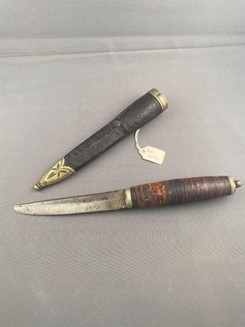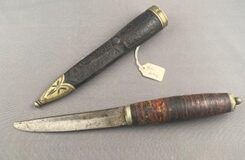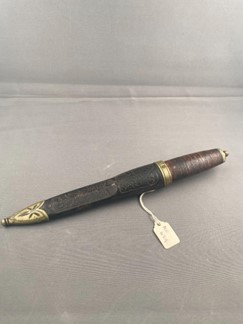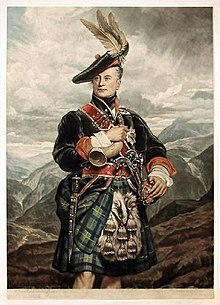Dirk and scabbard blog
This blog is about a dirk and scabbard that was donated to Egham Museum in 1982 by Miss Trowbridge. There is not very much information on dirks and scabbards and what they were used for. However, dirks were mostly part of the ceremonial uniform of the Highland Regiment because they were historically used by the Scots. There were also other uses such as naval but this dirk is too small to have been used in the navy and is also too broad. The dirks in the navy were quite long and thin. However, most dirks at museums are naval dirks.
The dirk in Egham Museum was probably manufactured instead of handmade because there is no date engraved on it shown when it was made. This means that it is uncertain when it was created for the person who owned it. However, it was probably made in the late 19th Century or early 20th Century because that was when dirks were popular. The dirk only became ceremonial in the 19th Century in the Highland uniform so this was probably from the 19th Century. The blade is made of steel with some wear and tear showing that it might have been used by the owner. The picture below shows a Scottish ceremonial uniform with the dirk. You can see that it would have hung from the belt.
The blade on the dirk is very small showing that it was probably not used for battle but was ceremonial. The blade is also quite blunt so would not have been able to be used for fighting. The wooden handle on the dirk is probably made of ebony which has been lightened by use, yet it is hard to see what type was used. Ebony was quite common for the hilts of dirks. The dirk looks very normal for a dirk with not much design on the actual dirk as there are in other cases in museums, which you can see in the picture below. This shows that it was probably mass produced rather than crafted specifically for the person who owned it. The blade is also shorter than other dirks, especially the naval dirks, suggesting that it was not used for battle. Most dirks in museums are naval dirks, so this dirk is an outlier.
The scabbard for the dirk is very ornate with many different designs on it. It is made of leather which is slightly faded. The patterns on the leather scabbard resemble a few things such as a thistle or celtic swirls. This implies that it was made up in Scotland as part of the ceremonial dress for the Highland Regiment and probably used by an officer. The dirk was very important to Scotland because it was used by the Scots and showed their status and family. The dirk and scabbard would probably have been a status symbol because only the officers could own one.
The scabbard is also overlaid with brass with lines on it which are in the shape of an eagle or angel. The pattern on the brass overlay also resembles a heart. The brass resembles gold suggesting it was made to suggest that the scabbard was more ornate than it really was. There is a hook on the scabbard showing that it was probably carried around on the person on the belt. You can also see in the picture at the top, that the pattern on the scabbard can be viewed as several things such as swirls or a thistle.
Overall, this dirk was probably used for ceremonial wear rather than functional use. It is also hard to see when it was made because no date was engraved. It was probably also part of the Highland Regiment suggesting that the owner must have been a soldier maybe in the late 19th Century and the dirk was an important part of the ceremonial uniform. It is also probably manufactured rather than handmade, so looks very simple. The scabbard is very decorative in contrast to the plain dirk.
Sources
https://mmbc.bc.ca/dirk-scabbard#:~:text=A%20dirk%20is%20a%20type,safely%2C%20and%20to%20protect%20it. https://drive.google.com/drive/folders/1Kfon3Dsjn7OoArlhCK9btqZZaMrf6uaF




